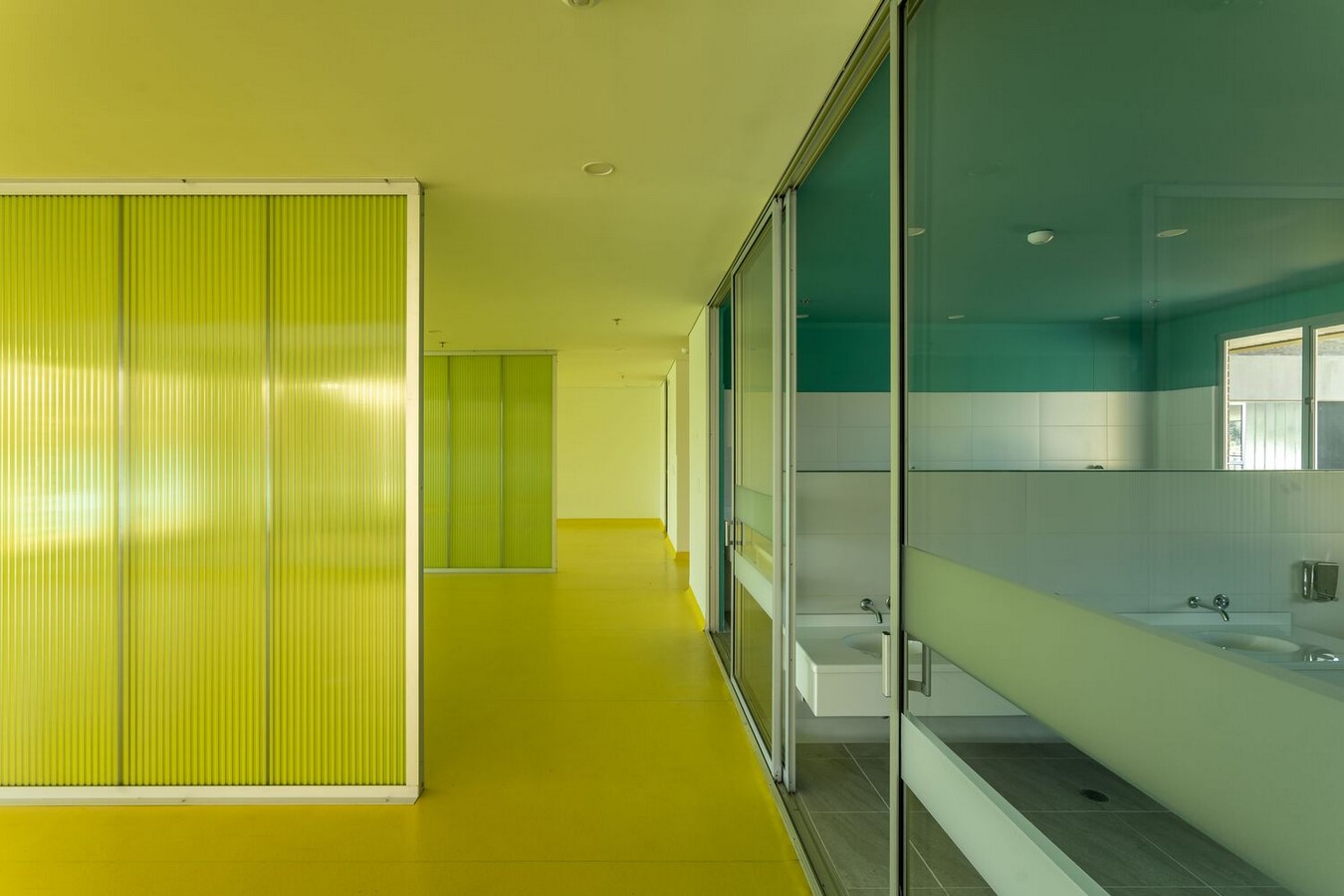Introduction
Nestled within the burgeoning educational hub of Bosa, south of Bogotá, the Campo Verde Kindergarten stands as a vital component of the community’s educational landscape. Situated on the cusp of urban development and natural terrain, its architecture harmonizes with the surrounding environment while addressing the needs of early childhood education.

Architectural Integration
The design ethos of the kindergarten is deeply rooted in its location, forging a symbiotic relationship with the distant landscape, including the hills, savannah, and river. Comprising a series of volumes enveloped around an open enclosure, the structure beckons a dialogue with the expansive vistas beyond, embodying a cohesive blend of urban and natural elements.
Pedagogical Spaces
Structured around adaptable 12 x 12-meter volumes, the kindergarten fosters an open learning environment conducive to children’s developmental stages and interests. These volumes house primary learning areas and covered extensions, facilitating diverse pedagogical strategies. The infrastructure supports comprehensive early childhood development, with flexible spaces promoting activities ranging from libraries to workshops, seamlessly integrating indoor and outdoor experiences.
Spatial Dynamics
Interconnected volumes give rise to courtyards, terraces, and play areas, fostering dynamic spatial interactions within the complex. Double heights and interior balconies maximize user engagement, creating micro-landscapes that enrich curricular offerings and pedagogical approaches. Ludic activities thrive on the upper level, fostering creativity and exploration in multi-purpose classrooms and outdoor terraces.
Functional Layout
Public areas and essential services are strategically positioned on the ground level, offering seamless access to courtyards and the surrounding landscape. Priority spaces like nurseries and walkways prioritize safety and accessibility for the kindergarten’s younger users. The construction ethos emphasizes simplicity and durability, employing locally sourced materials and techniques that ensure long-term stability and integration with the surroundings.
Conclusion
The Campo Verde Kindergarten epitomizes a harmonious blend of architectural innovation and pedagogical excellence. Rooted in its context, the kindergarten not only enriches the urban fabric and natural landscape but also fosters active and collaborative learning experiences, propelling young minds towards a brighter future.